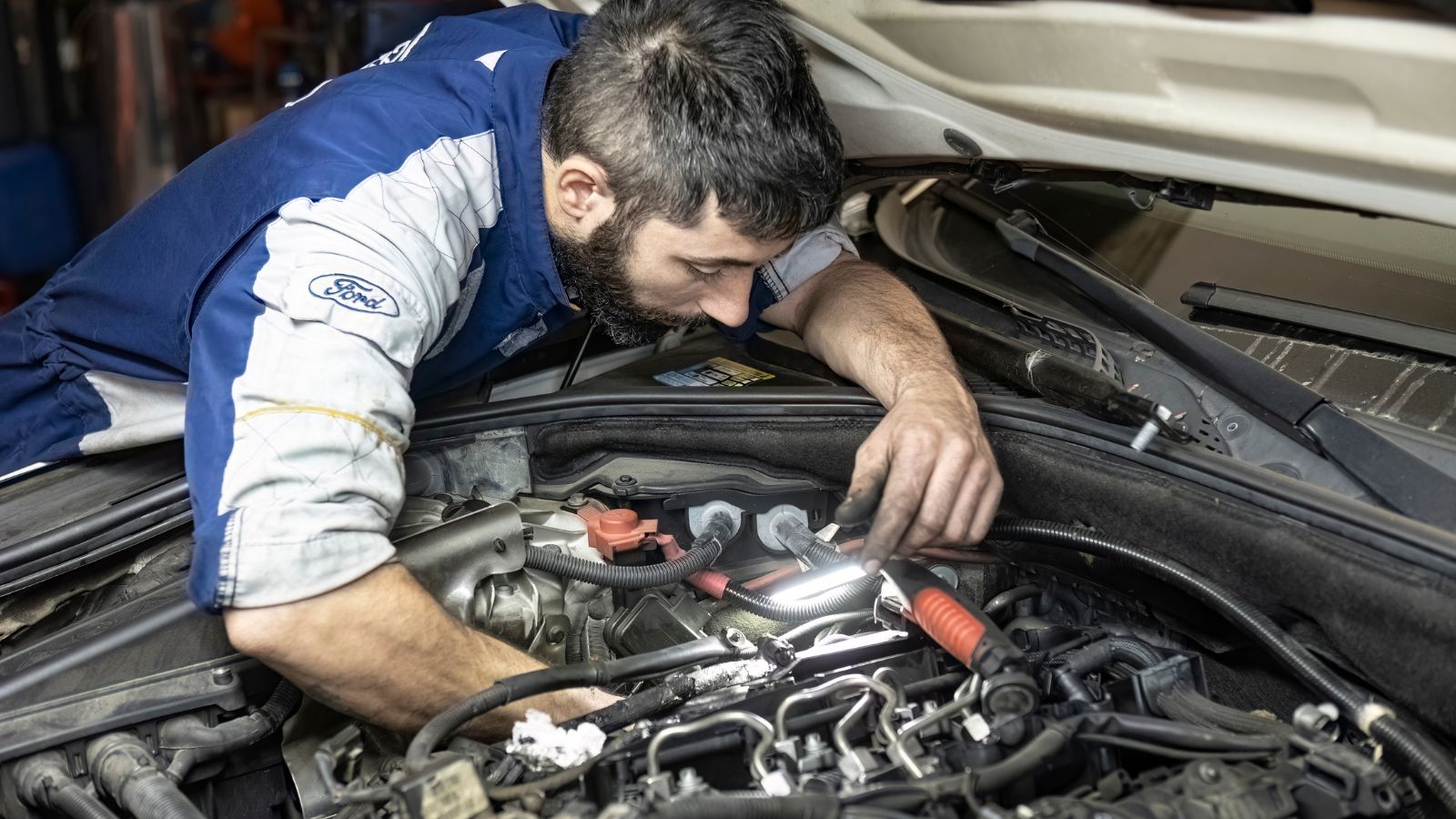We don’t think anyone would disagree with us when we say that Ford has produced some iconic engines. Amongst its portfolio of stellar high-performing engines, there are bound to be some which may cause some problems.
While the Ford 460 V8 7.5L engine isn’t the American automobile giant’s worst, it does have its fair share of problems.
Don’t get us wrong, though. This engine is known for its reliability. But there are some problems. This article will be all about Ford 7.5 engine problems you need to know about.
The 460 7.5L engine was produced all the way back from 1968 till 1998. That’s quite a run if you ask us. Before we dive into the known problems, we want to give you a snippet of history.
Table of contents
Ford 460 7.5L Engine Brief History
Ford tweaked the early iterations of the engine quite heavily. During the early 70s, the engine went through a redesign. It got a refreshed and new camshaft. Also, the compression ratio was lowered.
Another redesign was the heads. This was quite a bad redesign. It frequently broke down and was unreliable. There were a lot of complaints, and the frequent breakdowns led Ford to redesign the engine once again.
In 1973, the engine saw another redesign which solved some of its problems. But it wasn’t until 1998, where it saw the biggest improvements when the engineers decided to add fuel injection.
As you can see, this engine went through quite a lot. And, not to mention, it was a very famous engine for hot rods. It could produce an impressive 500 HP with the right kind of fueling. Not bad at all!
Ford 7.5 Engine Problems
Although the 7.5 saw a lot of applications, as we already mentioned, there are some common problems with it.
1. Water Pump Leaking/Failure
The water pump is meant to keep coolant circulating through the engine. Well, not when it leaks through. It’s a pressurized system as well. What does that mean? It means the interior of the water pump will deteriorate over a while.
And that’s what the 7.5 460 engines did. It was known for basically eating the water pump. This was an issue both in the fuel injection and carburetor versions of the engine.
The factory pump had weak bearings. This meant they were prone to breaking, and the fan belt would stress out the pump to fail. It happened because of over tension.
Even the coolant would leak in some cases. It’d leak through the weep hole, which is also called the vent hole.
The purpose of the hole itself was to notify users about any damage to the seal. So, some would see coolant or oil leak from this particular hole.
2. Broken Bolts and Warped Exhaust Manifold
All metals in the engine will go through a heat cycle. It’s the constant cooling and warming up of it. From basic high school science, you’d know that metal will expand when it’s hot. And when it’s cold, it’ll contract.
This meant the metal would crack or warp. Its exhaust manifold is actually one of the first components of an exhaust system. Its job is to carry exhaust gases to the piping from the valves.
And not to mention, it’s usually made from metal or cast iron and bolted to the block. When it constantly heats and cools down, it contracts and expands, which puts extra stress on the components.
Sometimes you may see coolant leaking, and oil may leak as well. If oil is leaking, it’s a good sign that the seal has failed.
There are some symptoms you can keep an eye out for. These will help you catch any signs earlier:
- Overheating engine
- Whining noise
- Coolant leaks
- Fan being constantly on
3. Oil Cooler Failure
An oil cooler failure will result in a cooling issue similar to the previous problem. The 7.5 Ford 460 uses a heat exchanger cooling system. Let us explain what that means.
An oil cooler will pull the oil into the internal tubes. These tubes will also have engine coolant running on the outside. The job of the coolant is to reduce the temperatures as the oil flows.
Since the coolant and oil flow inside the same system, the oil could be mixed with the coolant. Which, as you may guess, can cause severe engine damage.
The oil cooler sometimes fails and mixes the two fluids. Coolant isn’t as lubricating as oil. So, it can starve out the internal components. The components that need proper lubrication to function will cease to function properly and cause a lot of damage.
There are some symptoms here you can keep an eye on as well:
- The cooling system has traces of oil in it or
- Coolant getting into the oil system
- Oil or coolant leakage
4. Timing Chain Cover Leak
The timing chain typically bolts up to the front block. It protects the timing chain itself and also guides it.
Another crucial function it does is provide some protection from debris, grime, and dirt. For it to run properly, it needs proper lubrication. Otherwise, the constant heat and friction can stretch it out.
In some cases, there can be leaks. This may be caused by a couple of things. The gasket that’s between the timing cover and block can wear down. This is a big no-no since it can cause the coolant to leak.
Alternatively, the cover can crack as well. It can crack from normal daily wear and tear or high heat due to friction.
Its backplate which sits between the timing cover and water pump can sometimes leak too!
Coolant leaking is always bad for the engine. It’ll overheat and, in some severe cases, cause major components to warp. This may cause internal damage to pistons and rods – something you most definitely don’t want.
5. Main Rear Seal Leaks
This seal is used to seal off the main crankshaft bearing. It usually sits on the back of the engine block. Since the crankshaft is basically the component that goes through the most stress, it needs the largest bearing.
And the rear main seal is the seal for the main bearing, which is found at the rear. One of its main jobs is to make sure that the oil doesn’t leak from the crankshaft. So, quite an important thing.
Naturally, this component goes through a lot of stress. You can say it’s quite unavoidable due to where it’s located.
When the crankshaft spins, it will wear down this seal and cause oil leaks. There is something to note here, though.
This component is meant to wear down over time naturally. But improper maintenance can hasten the process. Not replacing oil changes frequently enough or low oil levels can cause problems faster.
To some extent, you can prolong the durability of this component by taking proper care and maintenance.
FAQs
Is the 7.5 460 unreliable?
Not at all. Although there are some problems, this engine has a 30-year history. After its early redesigns, it became very reliable.
Can proper maintenance mitigate some issues?
Yes, it can. Most of the issues we mentioned here are just due to age and high mileage. You can mitigate or postpone some issues if you take proper care.
What engine is the 460 7.5 based on?
The 460 7.5L engine came from the 385 series of Ford engines. There were some differences, though. For example, the stroke was different. However, the bore of the was the same.
Wrapping Up
There you have it. Now you know all about Ford 7.5 engine problems. As we mentioned earlier, these problems naturally occur due to age. It’s by no means a bad engine and a great option for hot rodding as well!
Recent post
How To Reset The Exhaust Fluid System Fault On A Ford Diesel Truck
Do You Know What Does XLT Stand For FORD?
Common Ford F-350 Speed Sensor Problems You Should Be Aware Of
Ford 5.4 Engine Life Expectancy
How To Remove Ford Dually Fender Lights?

Thomas is a retired motor mechanic, father, and grandfather. He writes from his 20+ years in the automotive industry to help you find and solve anything related to car repairs, maintenance, and care.
